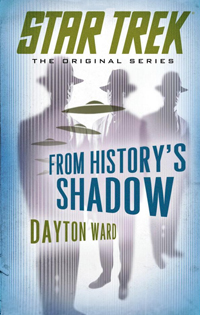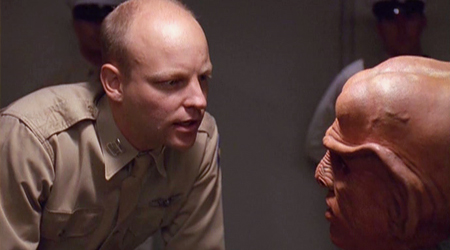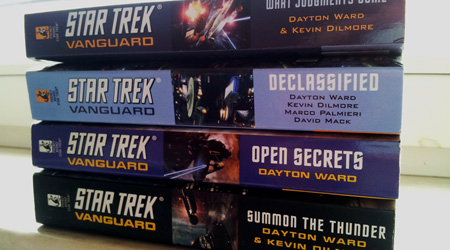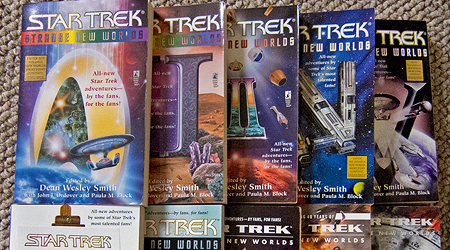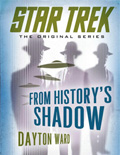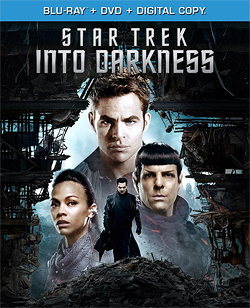 Star Trek Into Darkness
Star Trek Into Darkness
Release Date: September 10, 2013
Blu-ray Disc / DVD Combo • 2 Discs
Paramount Pictures
Picture Quality
![]()
![]()
![]()
![]()
![]()
Bonus Features
![]()
![]()
![]()
![]()
![]()
![]()
It’s likely that I’m a bigger fan of 2009’s Star Trek reboot than a large segment of our readers, certainly more than our editor. I thought the cast was perfectly chosen; the film made big changes to the world of Trek while taking the time to protect the “prime” universe we’d been living with for decades; it drew heaps of both critical and ‘civilian’ praise, finally bringing Star Trek back into the mainstream after years of waning interest from the general public – while at the same time, turning off a more-than-small number of dedicated, lifelong Trek fans.
When fans began to think about the inevitable sequel, everyone’s first instinct was to wonder how director JJ Abrams and writers Alex Kurtzman, Damon Lindelof and Roberto Orci would handle it. Would they take a well-known story from Trek history and reinvent it for this modern audience? Would they begin an all-new adventure, following this group of untested Starfleet officers on a mission we’d never seen?
It’s fair to say that Star Trek Into Darkness has been a hotly-argued film since the moment the title was announced. As time marched on towards the London premiere in May 2013, speculation that the film’s villain would be a recast Khan Singh – a role made famous by Ricardo Montalban in the Original Series and later Star Trek II: The Wrath of Khan – stoked the fire under an already antagonistic segment of the Trek fanbase, who remained doubtful that the team that “ruined” Star Trek in the 2009 film could ever honor such a famous and well-loved character.
Benedict Cumberbatch’s character “John Harrison” became the centerpiece of the debate as soon as the name became public: Was he a new character? Is he Khan in disguise? Maybe he’s the new Gary Mitchell, with Alice Eve as Elizabeth Dehner!
Eventually, Paramount’s unusual international release schedule for the film – premiering in the UK two weeks ahead of the United States – brought all the discussion to a head: Cumberbatch really was playing Khan, and oh boy, you are going to hate this movie!
Once again, the lines were drawn: people either loved the film for it’s action and adventure, incredible visual effects and ship-to-ship battles, and Cumberbatch’s cold, calculating juggernaut of a villain, fighting to protect his family… or people hated it for taking the beloved storyline of Star Trek II, running it through a garbage disposal, setting it on fire, and dumping the ashes into a film can. (Note: an actual review posted on a popular discussion forum).
I’m not going to spend this review focusing on the problems I had with the plot of Into Darkness – though I will address certain issues as they come up in the bonus material – but I’m sure our readers will enjoy a lively debate on the film’s merits (or lack thereof) in the comments below.
Shall we begin?
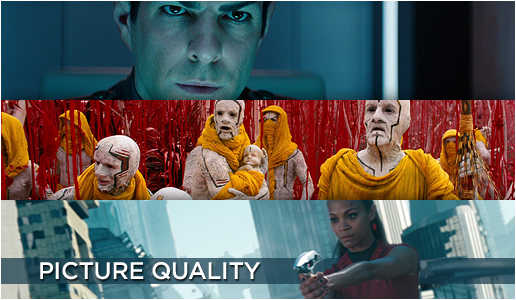
It’s difficult to find any word besides perfection to describe the visual quality of Into Darkness.
Every single shot – from closeups of the mud-coated Nibiran natives in the lush forests, to the bright halls of Starfleet Headquarters under attack from outside the building, to the high-speed chase above the surface of the Klingon homeworld – provides a dazzling display of color that really propels this film to the top of the “best-looking” Trek release list.
The white corridors of the Enterprise, the bleak planetoid used for torpedo surgery, the flashy nightclubs in downtown San Fransisco… each new location looks better than the last.
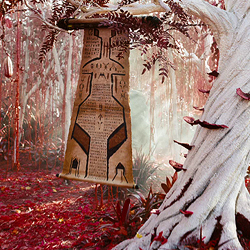 |
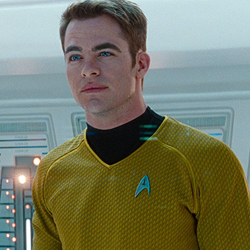 |
| Every vibrant color, from Nibiri’s lush red forests to Kirk’s blue eyes, just pops on screen. | |
There is a lot of darkness in this film as well – pardon the pun – from the depths of the Enterprise engineering section to the bowels of the Vengeance cargo bays. Despite the dim lighting used to accentuate these scenes, there was never a sense of loss of clarity when I rewatched the film on Blu-ray.
The National Ignition Facility reactor at Livermore Labs, used in Into Darkness to represent the Enterprise’s warp core, is a piece of technology that looks just as futuristic as the ship it’s meant to power. Every tube, wire, coil, and switch is viewable in amazing detail in this release, even when the ship is careening towards the surface of the Earth.
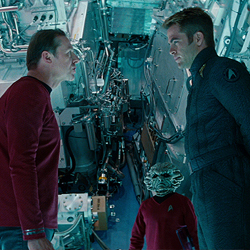 |
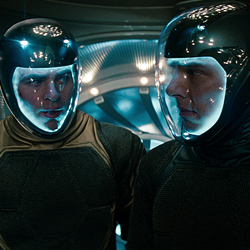 |
| Every inch is full of rich detail, even in darker areas like the engine room or airlock. | |
The only detraction I have to offer is regarding the lack of IMAX footage in this release. Several scenes from Into Darkness were filmed with IMAX cameras for a dazzling display in theaters, and all of that footage has been cropped to match the standard 2.40:1 aspect ratio of the rest of the film.
This may have been done to reduce viewer confusion, as those unaware may have wondered why the aspect ratio of the film kept changing from scene to scene – but for a movie that looks as good as this one, that extra picture is a significant loss.
It’s been reported that the German edition of the 3D/Blu-ray/DVD combo pack includes the IMAX footage in full aspect ratio, but it’s unclear as to why it wasn’t included in any of the domestic releases.
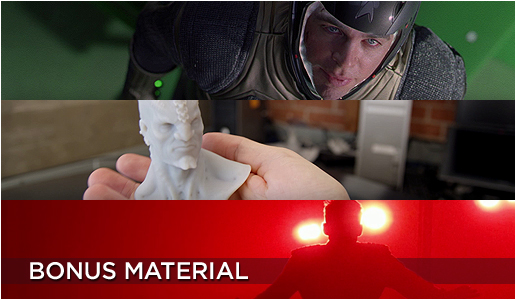
The standard Star Trek Into Darkness Blu-ray release includes just a handful of behind-the-scenes featurettes – completely produced in-house by Bad Robot, the film’s production company, and not by Paramount – running just over 40 minutes. Yep, that’s it – no deleted scenes, no audio commentary, not even a set of trailers for the film.
Why, you ask? I’ll give you two words every consumer loves to hear: retailer exclusives.
It’s certainly nothing new to Trek fans; ever since the first DVD boxed sets started coming out over a decade ago, words like “Best Buy bonus disc” became synonymous with Star Trek media releases. Even the newly-produced Enterprise and Next Generation Blu-ray sets were hampered by exclusive content (specifically paid for by Best Buy for release at their stores), though that program has thankfully ended for the foreseeable future.
Sadly this isn’t a case of a single feature being produced for a specific retailer: for Star Trek Into Darkness, an entire hour’s worth of additional making-of footage is relegated to Best Buy’s CinemaNow streaming service and Target in-store bonus discs releases (with each retailer offering DIFFERENT content).
On top of that – and brace yourself for this one – the sole audio commentary track is locked into the iTunes digital release package.
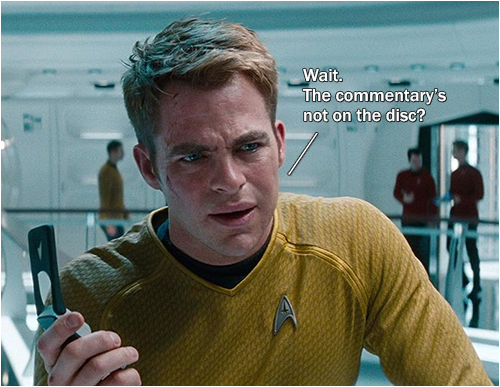
Let’s break it down: buying multiple copies of Star Trek Into Darkness in an effort to obtain all the bonus features can get pretty pricey, especially if you paid even more for the 3D/Blu-ray/DVD combo set… and God help you if you’ve already dropped $79.99 on that Amazon-exclusive Blu-ray/Phaser combo set, which includes NONE of the Best Buy or Target features.
As for our international readers, we’re still trying to piece together all the different international options for getting hold of the additional material. Canada’s Best Buy release will include a physical bonus disc in place of the CinemaNow streaming content; the German 3D/Blu-ray/DVD combo set and the the Sainsbury’s (UK) Blu-ray/DVD combo appear to have the same features as the Target release; Tesco’s Blinkbox streaming service is apparently advertising twenty minutes of unspecified extras in the UK – but aside from that, we have no information as to where the rest of this extra content will be available outside of the United States.
|
|
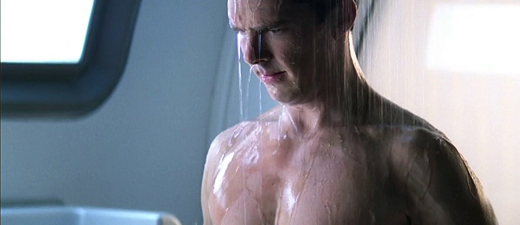 |
| Wondering about deleted scenes and other footage? Time for a cold shower. |
There are at least two deleted scenes known to exist for Into Darkness: JJ Abrams showed a clip of Khan showering during his May 2nd appearance on TBS’s Conan, and Alice Eve described a cut sequence involving Carol Marcus’ backstory in a mid-May interview with TrekMovie.com. So where are they?
AUSTRALIA.
Well, maybe. The only retailer we’ve found listing any kind of deleted scenes is Australia’s Big W, which also includes “Bloopers”, a mysterious “Roundtable” piece, and “Easter Eggs” on their Into Darkness product listing, along with generic listings for the standard VAM (and some of the Target exclusives). We have not yet been able to confirm this content, so please take this information with a large grain of salt until we can lock down the facts.
SEPTEMBER 2 UPDATE: We’ve gotten a copy of the Australian release details, and it seems that no retailer is set to include deleted scenes in their Blu-ray package. Read more here: http://blog.trekcore.com/2013/09/into-darkness-exclusives-part-i-video-vam/
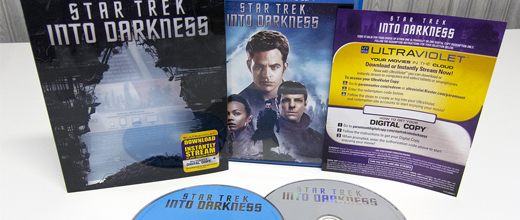 |
| Don’t be so quick to throw out that Digital Download certificate. I mean it. |
There’s only one bright spot out of this mess, and that’s the Digital Download code included with the retail Blu-ray set. While you can use it with several online movie services, it’s also compatible with iTunes, which means that it WILL give you access to the iTunes exclusive “enhanced commentary”… if your Internet connection can handle an additional 5Gb download.
I’ve already read comments around the web from people saying that they’ll just play the commentary from their laptop while watching the Blu-ray on their big-screen television, but I’ve got news for you: the iTunes commentary is more than just an audio track – it’s an entirely separate encoding of the film, with on-screen picture-in-picture annotations and behind-the-scenes footage. There’s no additional scenes in this version of the film, but because the commentators often pause and rewind footage to highlight specific elements of production, the thing runs nearly thirty minutes longer than the standard film.
It’s also the full 1.78:1 IMAX version of the film – something I already covered up above, missing from the Blu-ray disc – presented with shifting aspect ratio to provide the true IMAX-sized picture where applicable.
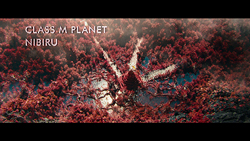 |
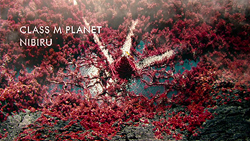 |
| About 30% of each IMAX sequence is cut due to the cropped aspect ratio on the Blu-ray. Note: the IMAX capture is in 720p due to the iTunes enhanced commentary source file. |
|
I can hear your response now: “Oh, I’ll just wait for the inevitable ‘ultimate edition’ of Star Trek Into Darkness, with all of this stuff in one package.” Well, I wouldn’t hold my breath – Paramount hasn’t shown any interest in repackaging bonus material sold to different retailers into a combined release in the past, and with so many separate parties involved this time around, it’s unlikely that it’s going to happen anytime in the foreseeable future.
TrekCore was able to obtain ALL of the additional retailer-exclusive material produced for our review – that’s TWELVE MORE featurettes, along with the iTunes commentary – and we’ll cover all of that stuff in a second article, coming in the next few days.
For now though, here’s what’s included in the standard retail release:
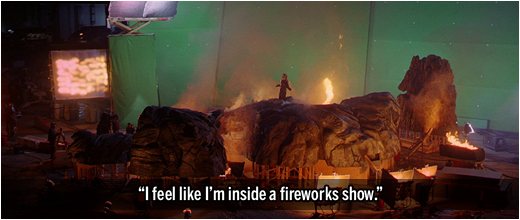 |
Creating the Red Planet (8:28)This is the first of several features showing off just how much effort the Into Darkness production team put into using physical sets and props to create the Star Trek universe for the big screen – starting with Nibiru, the jungle planet seen in the movie’s opening sequence. The team reveals the original plan to film the sequence – using Hawaiian jungle, color-corrected to an alien red – fell through when it was deemed to be too expensive, so the design department spent six months building an expansive, outdoor jungle set to film Kirk and McCoy’s escape from the Nibiran tribe. The first half of this feature also focuses on the creation of the Nibiran natives, from early sketches to the final makeup design. More impressive is the second part of this segment, centered around Zachary Quinto’s experience filming the fiery visit into the Nibiran volcano – all filmed in one long night shoot on a large rocky set surrounded by dozens of pyrotechnic elements and a camera-equipped helicopter! The whole piece is just a visual extravaganza, which I can’t imagine looking even half as good on DVD. . . . |
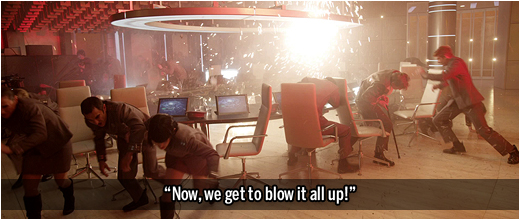 |
Attack on Starfleet (5:25)Khan’s attack on the Daystrom Conference Room at Starfleet Headquarters is the focus of this segment, centered around the choreographed stunts, wire work, and live explosives spread throughout the set. One unexpected discovery includes a look at the large, spotlight-adorned rig built to stand in for Khan’s attack ship on set. Using the practical set piece as the source of the dynamic lighting on stage served to add a much-needed bit of realism to the sequence. . . . |
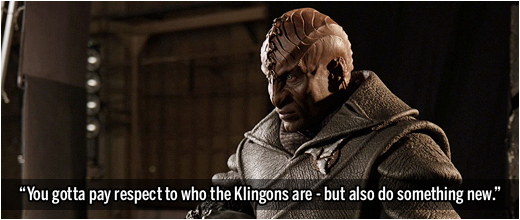 |
The Klingon Homeworld (7:30)This piece puts the redesigned Klingons front and center, along with the production team’s efforts to walk the fine line between respecting the lore and wanting to put their own spin on everyone’s favorite warrior race. The Kronos set – intended to represent a bombed-out, abandoned city on the Klingon homeworld – took up nearly every inch of a massive 40,000-foot stage, with nearly 1,500 lighting elements throughout the set drawing over a million watts of power. Costuming and makeup creation is also covered; much of the new makeup design was built first in CG for easy manipulation, and then printed in 3D for use by the makeup crew to tailor to each actor set to wear the prosthesis. Zoe Saldana’s (Uhura) Klingon language skills are also touched upon, with long-serving Trek linguist Marc Okrand making an appearance in one of the feature’s brief interview segments. . . . |
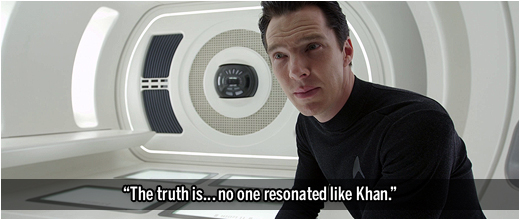 |
The Enemy of My Enemy (7:03)Okay, here’s where the big question of “Why Khan?” is addressed – and the answer, from what I can tell, is “because we wanted to.” Abrams and the writing staff start out by saying, “Look, there’s fifty years of Trek lore to draw from, so where should we start? Khan, because no character is as important as he is!” Abrams also shakes off potential criticisms of Benedict Cumberbatch’s casting – rather than a race-specific actor to match Khan’s ethnic background – by saying, “The truth is, I think if something’s good, that sort of supersedes everything. [His casting] felt like the right way to go because he was so damned good.” While this segment does touch on one of the more interesting parts of Khan’s usage in the film – as a weapon wielded by Admiral Marcus, the “real big bad” – I can’t help but feel extremely disappointed in this entry. I was hoping for any sign of hesitation or reluctance to using one of the most iconic figures from Trek history, but aside from a brief comment at the beginning of the piece, there was no indication that anything like that was ever considered. . . . |
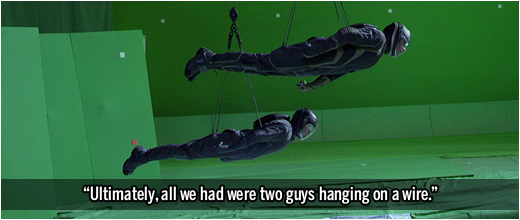 |
Ship to Ship (6:03)The Enterprise-to-Vengeance space-jump was one of the more memorable sequences from the film, and this featurette focuses on the two halves of that scene: the CGI work needed to project Chris Pine and Benedict Cumberbatch into space, and the creation of the oversized cargo bay aboard the Vengeance, where Simon Pegg (Scotty) was preparing for their arrival. Featured are both early CG pre-visualization sequences and lots of greenscreen wirework footage; one interesting thing of note is that the glass visors worn on the jump helmets seem to be a mix of both practical costuming and CG elements, depending on the shot. The second part is another example of Abrams’ impressive use of real, in-camera tricks to create impressive backdrops: the Vengeance cargo bay turns out to be a just massive wood-walled warehouse. Abrams’ idea to use the warehouse pretty much “as is” – enhanced only by a new black floor and deep shadows caused by strategically placed stage lighting – drew a lot of concern and criticism from the production design team, but they were all eventually won over after the first footage starting coming in from the shoot. . . . |
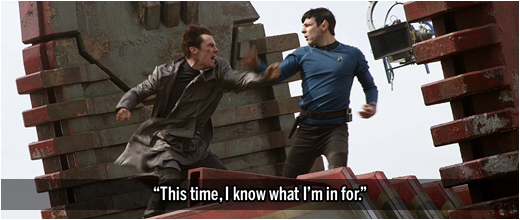 |
Brawl By the Bay (5:44)The climactic ending chase sequence – where Spock trails Khan through the streets of San Francisco – was a massive endeavor, utilizing hundreds of extras, stunt actors, policemen, and production staffers, culminating in the knock-down, drag-out fight scene on a pair of floating garbage scows above the city. Once again, I have to say that I’m extremely impressed with the set work that went into the fight scene: the entire garbage scow was built on a rotating turntable to adjust to the position of the hot Californian sun as it moves across the sky each day. Zachary Quinto (Spock) and Benedict Cumberbatch spent four days on top of that set, working very hard to look like they were really beating the crap out of each other – but time is taken to recognize the two stunt actors who performed the really tricky and dangerous wire-assisted jumps and throws. |
![]()
There’s no denying that the high definition presentation of this film looks absolutely beautiful – but this is the most confusing, exploitative release ever to bear the Star Trek name. While we can hope that Paramount one day puts out an “ultimate” edition of Star Trek Into Darkness with all of these additional features in one package, there doesn’t seem to be much precedent for such a set, looking at their recent release strategies.
Fans will most likely be forced to troll eBay or other resellers to track down copies of the Target and Best Buy bonus discs, but for those who want to watch the Enhanced Commentary outside of the iTunes restrictions… well, let’s just say they will need to turn to other means.
Are you as angry as I am yet? You have every right to be, but make sure your displeasure isn’t aimed solely at Paramount for this one.
From a source I spoke to familiar with the situation (who requested that we not publish their name):
“Bad Robot had 100% control [over the VAM production], it was all produced in-house, which is new – and they delivered the content to Paramount, who had basically no say.
It’s possible – and this is speculation – that the Bad Robot content was delivered late; because account-specific features typically have a later deadline than the Blu-ray, it could have been thrown to different SKUs. That’s a ‘nice’ way of looking at it.
The other possibility is that those retail outlets paid for the extra content. Could Bad Robot have sought out those exclusive deals? Possibly… for sure, this is not JUST Paramount’s doing. Nothing happened with that Blu-ray that wasn’t discussed and approved by Bad Robot, even if Paramount drove the decisions.
My point is, I think it’s fair to say that Bad Robot was involved in the split VAM decision, and it’s naive to think otherwise – because at Paramount, it’s JJ’s world. If anyone is disappointed in the Blu-ray, criticize the responsible parties – not only the ‘faceless’ studio.”
Bottom line: The old joke about Trek releases becoming “double dip” purchases is once again being told with Star Trek Into Darkness – but this time, it’s no laughing matter.
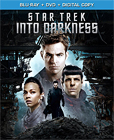 | Order Star Trek Into Darkness on Blu-ray today! | 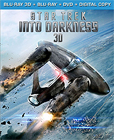 | Order Star Trek Into Darkness on 3D Blu-ray today! |
|---|
 |
Order Star Trek Into Darkness 3D Blu-ray Phaser Gift Set |
 |
 |
 |
 |
 |
 |
 |
 |
 |
 |
 |
 |
 |
 |
 |
 |
 |
 |
 |
 |
 |
 |
 |
 |
 |
 |
 |
 |
 |
 |
 |
 |
 |
 |
 |
 |
 |
 |
 |
 |
 |
 |
 |
 |
 |
 |
 |
 |
 |
 |
 |
 |
 |
 |
 |
 |
 |
 |
 |
 |
 |
 |
 |
 |
 |
 |

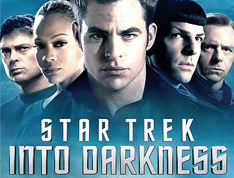



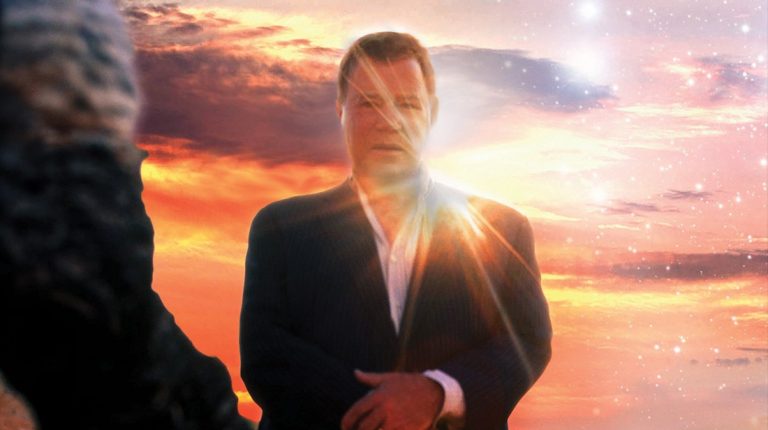
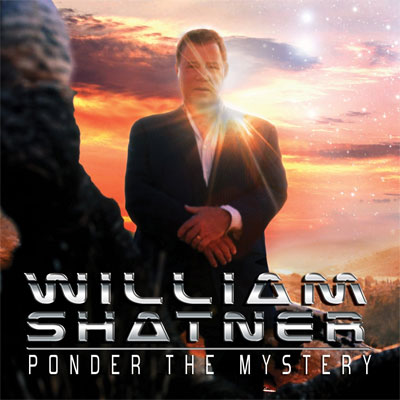
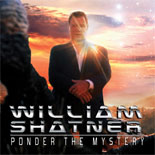


 David R. George III: I had a friend who worked on Voyager and who was, like me, interested in writing for Star Trek. Because head writer Michael Piller maintained an open-submission policy for the various Trek series—not only an unusual policy, but one virtually unheard of in modern Hollywood—we were able to pitch a number of stories to writer-producers Mr. Piller, Jeri Taylor, and Brannon Braga.
David R. George III: I had a friend who worked on Voyager and who was, like me, interested in writing for Star Trek. Because head writer Michael Piller maintained an open-submission policy for the various Trek series—not only an unusual policy, but one virtually unheard of in modern Hollywood—we were able to pitch a number of stories to writer-producers Mr. Piller, Jeri Taylor, and Brannon Braga.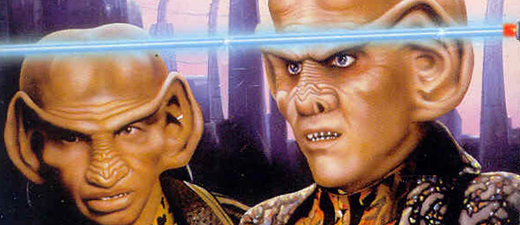
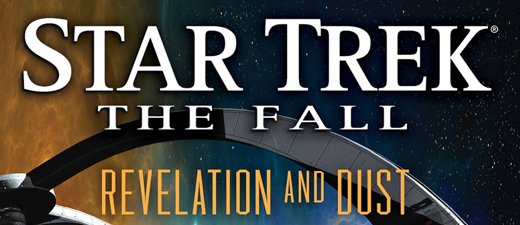
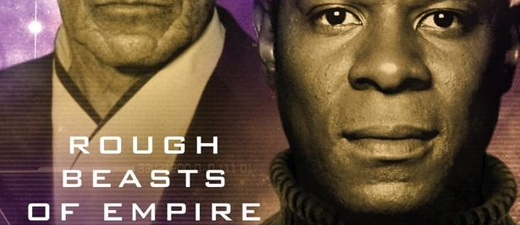
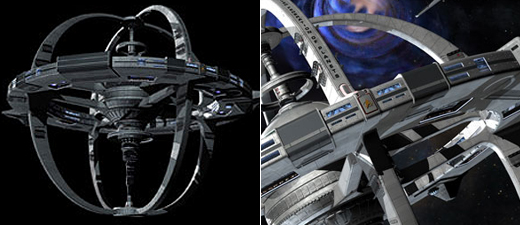
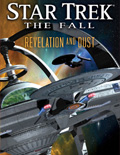
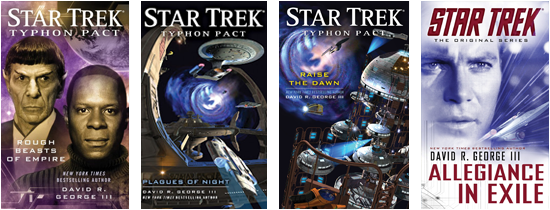
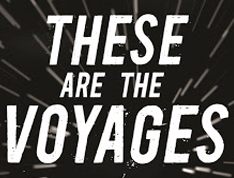
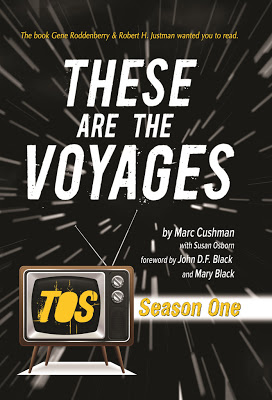
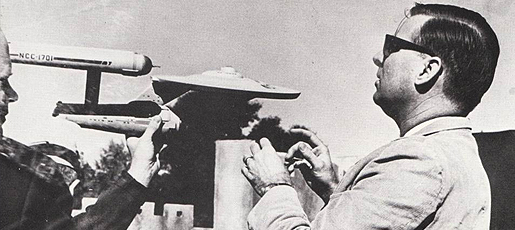
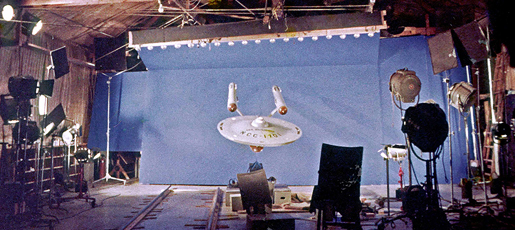
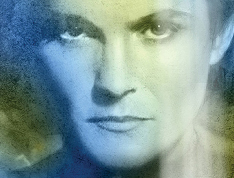
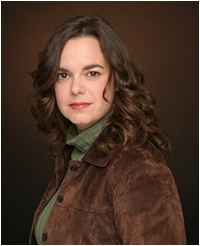 Kirsten Beyer: No. When I was asked to develop Full Circle, my understanding from my editors was that the choice that had been made to allow Janeway to die in Before Dishonor was not intended to be reversed.
Kirsten Beyer: No. When I was asked to develop Full Circle, my understanding from my editors was that the choice that had been made to allow Janeway to die in Before Dishonor was not intended to be reversed.
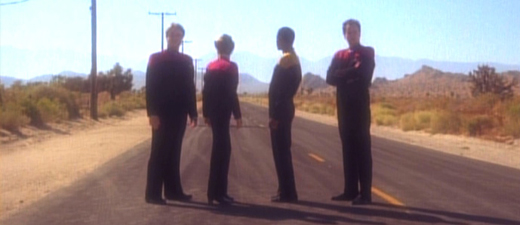
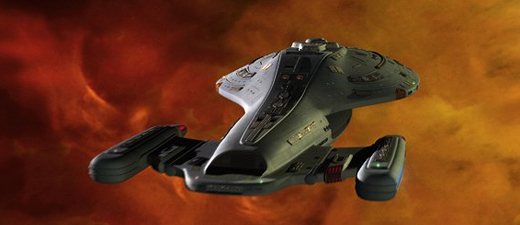
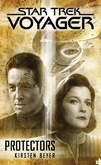
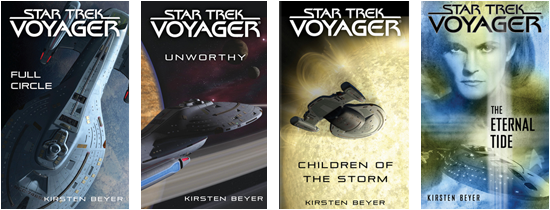
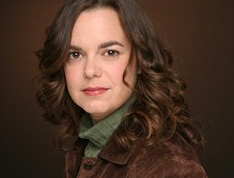
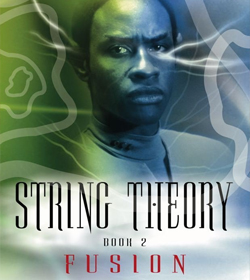
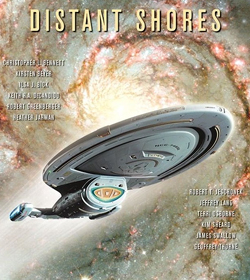
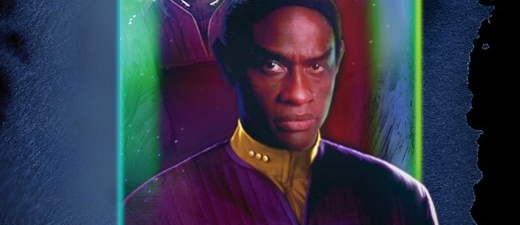
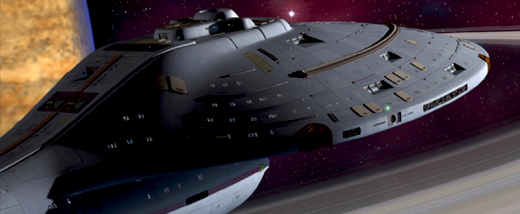
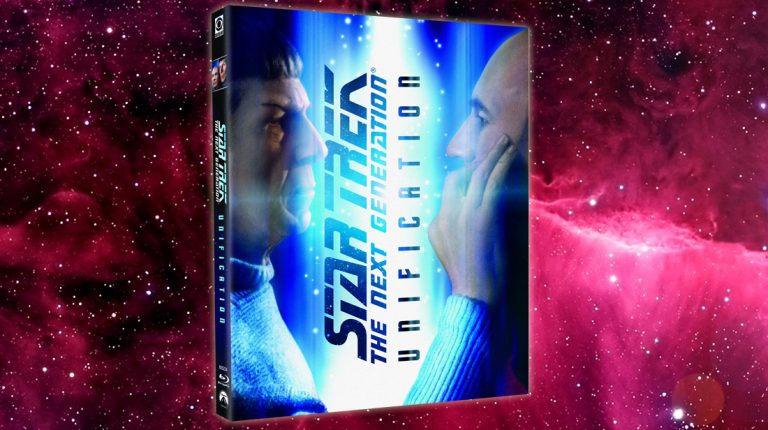
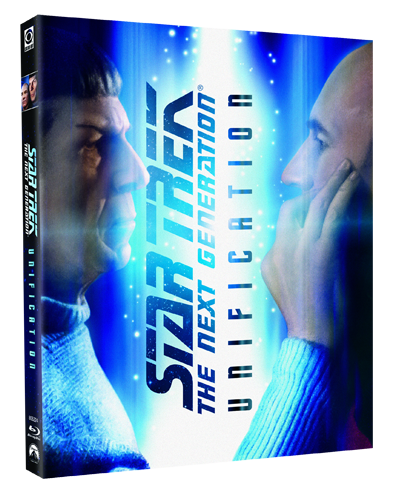
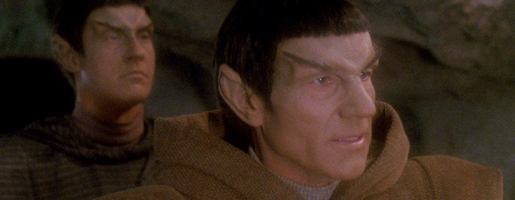
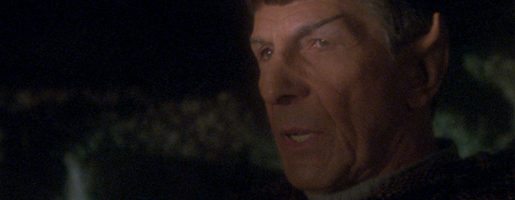
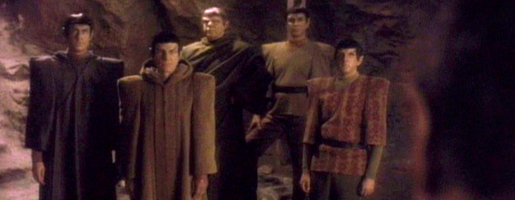
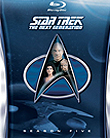
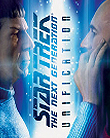
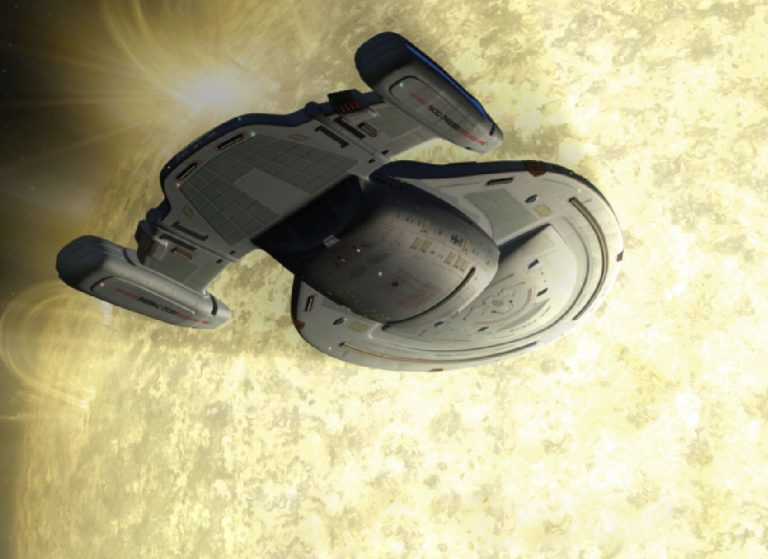
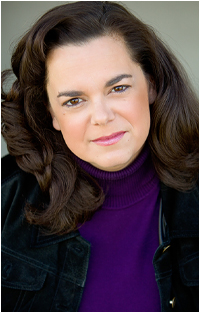 A brief recap of the Voyager series? I’ll try, but no promises!
A brief recap of the Voyager series? I’ll try, but no promises!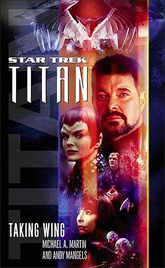
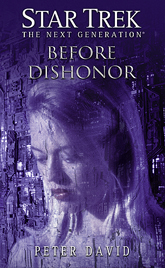
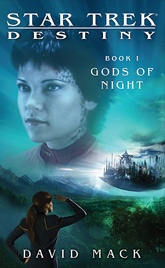
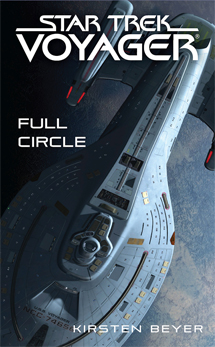
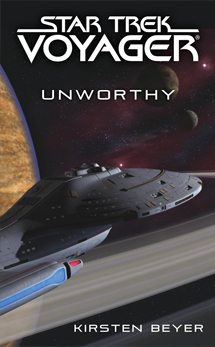
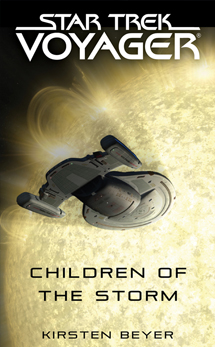
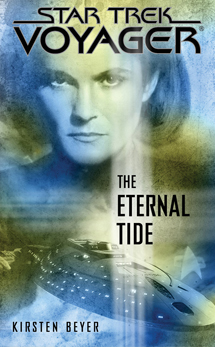
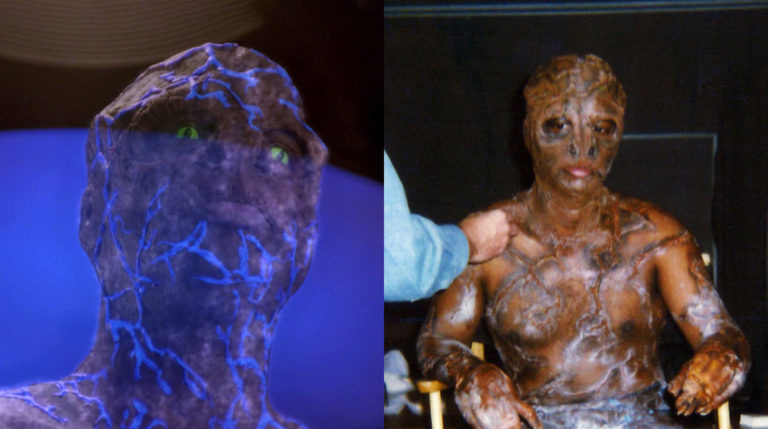
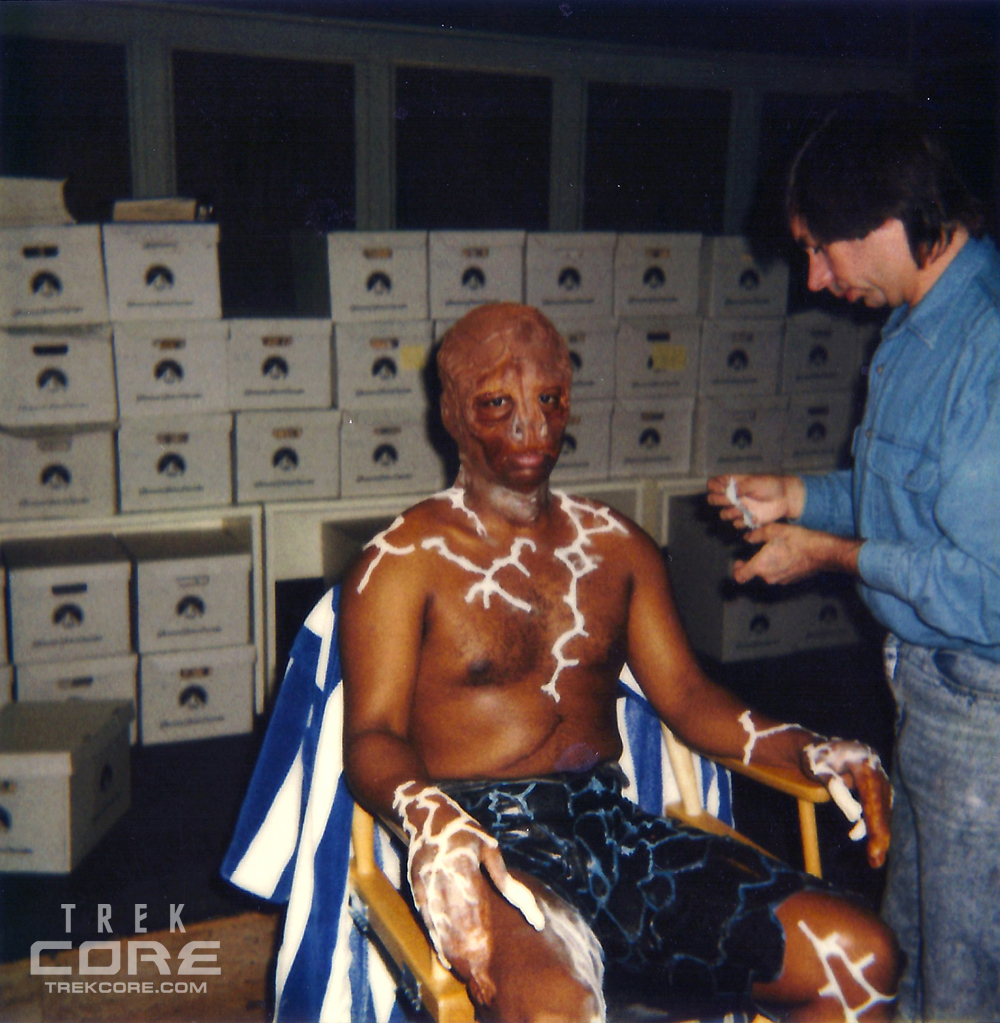
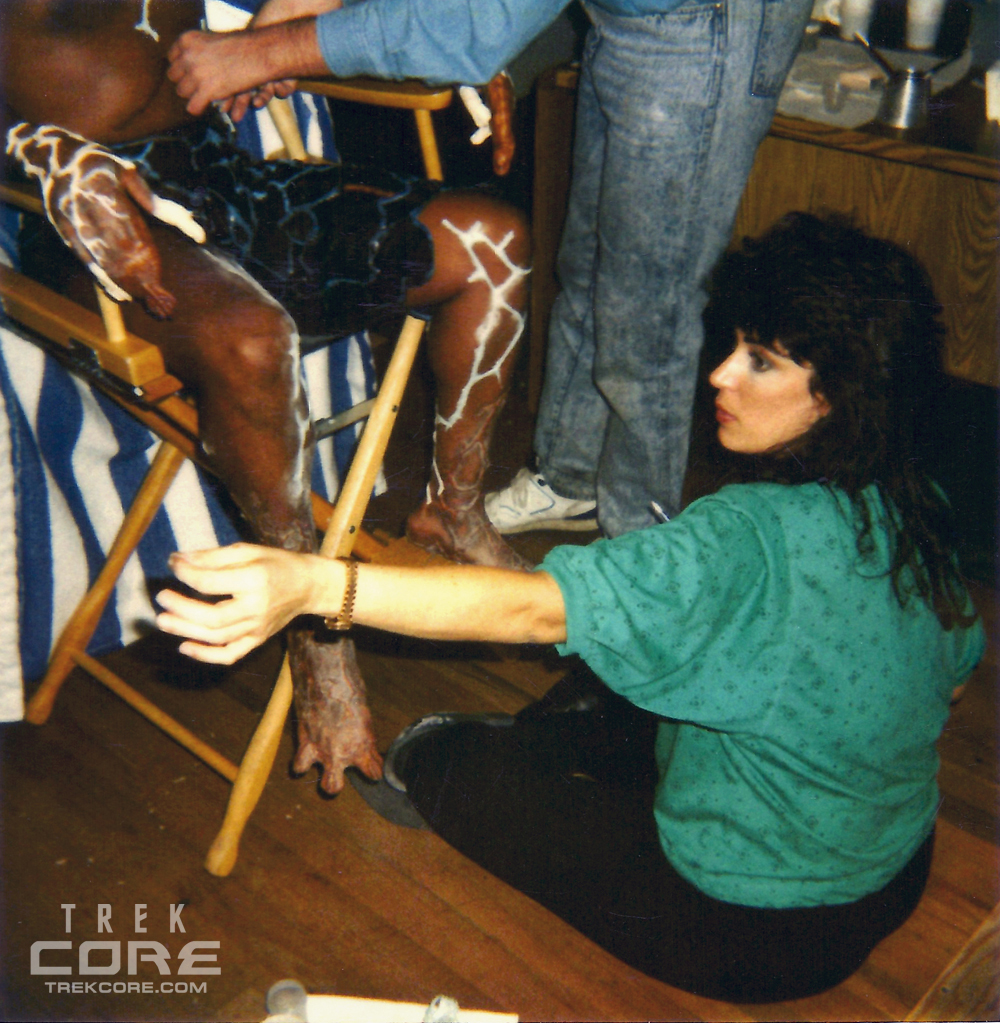
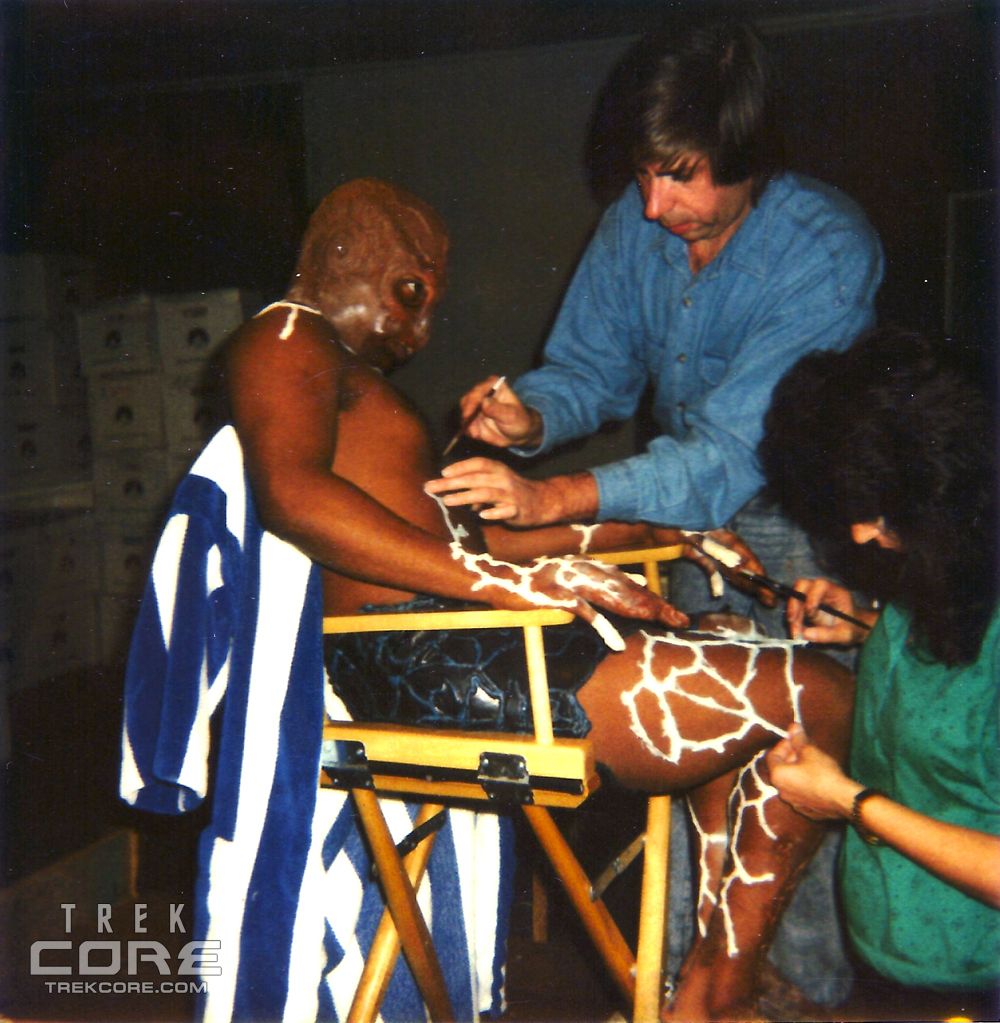
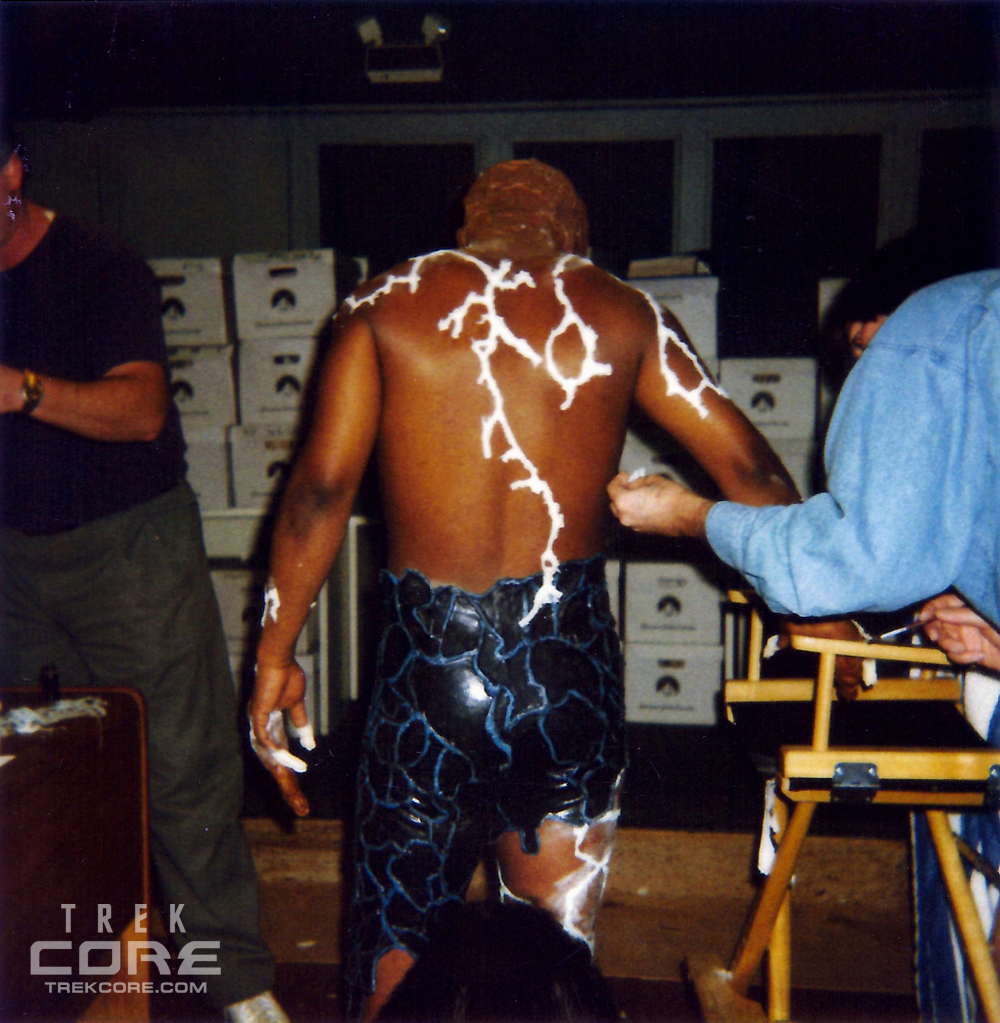
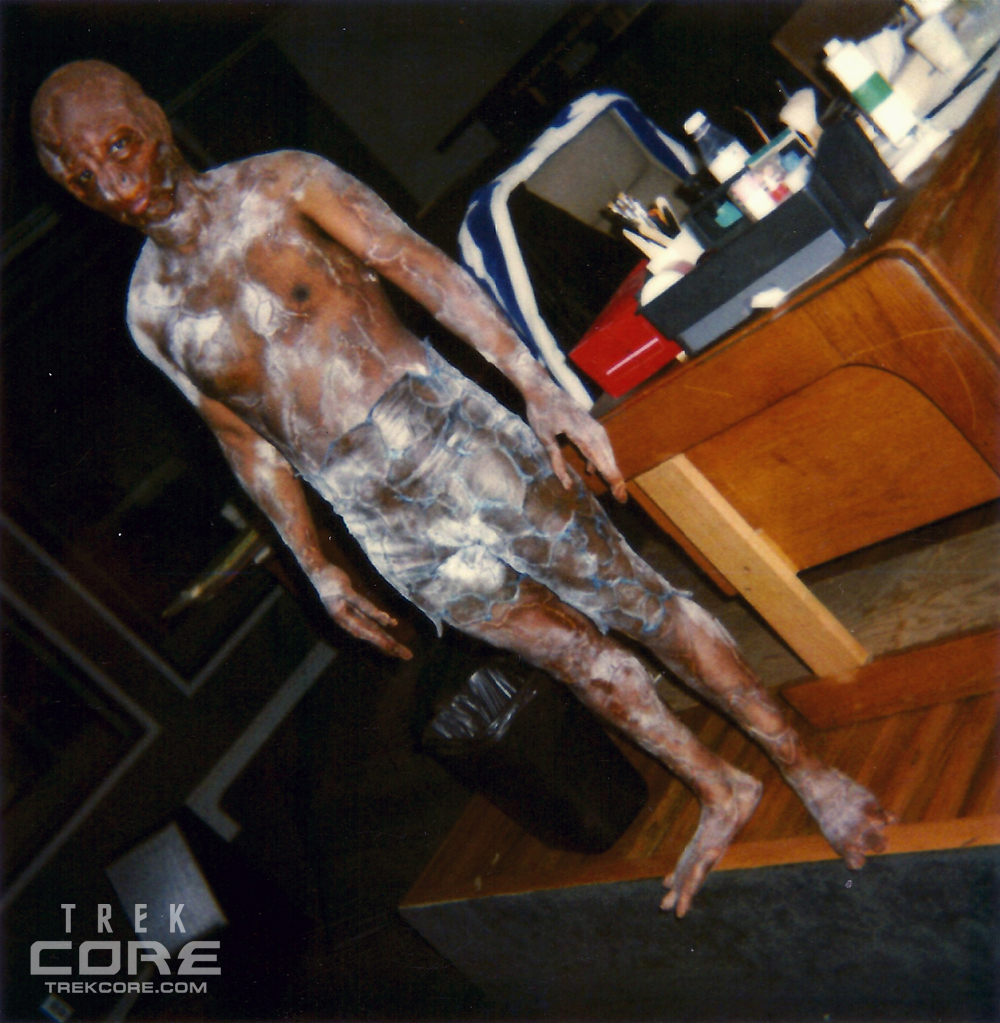
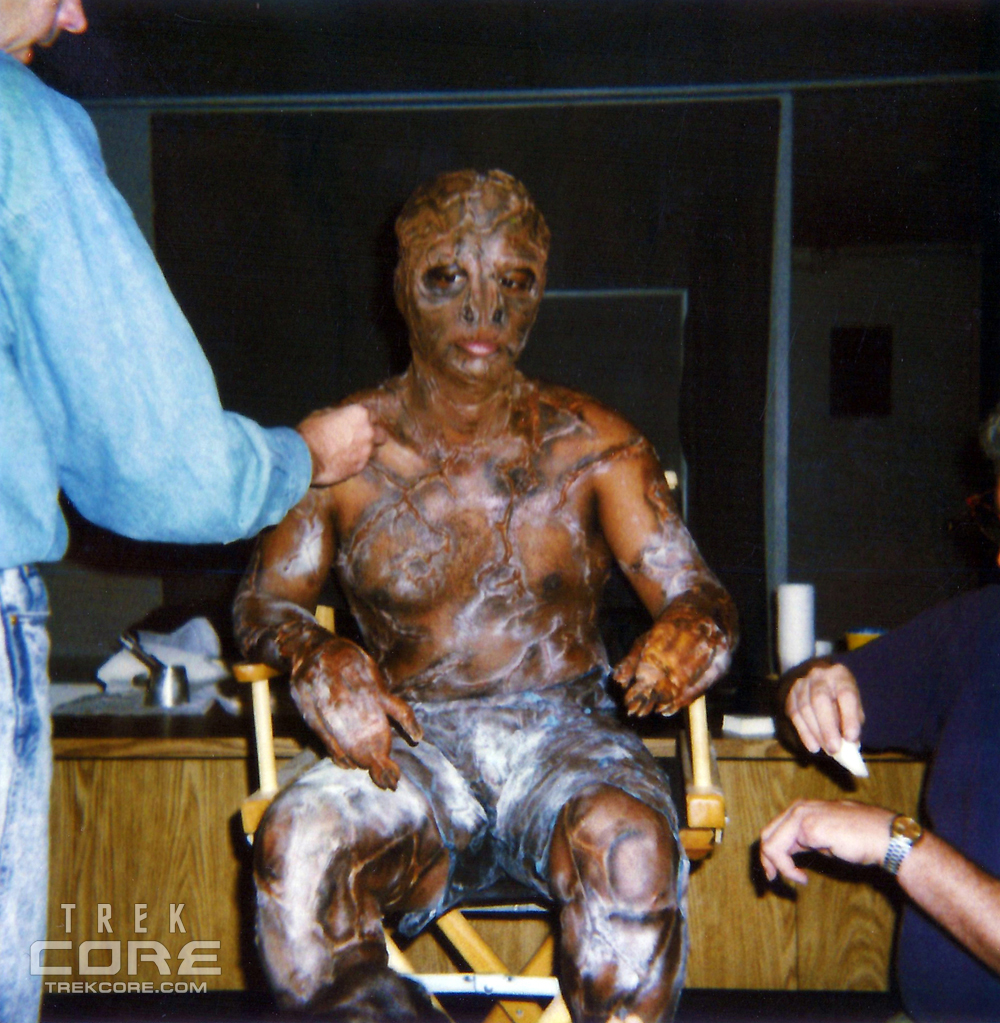
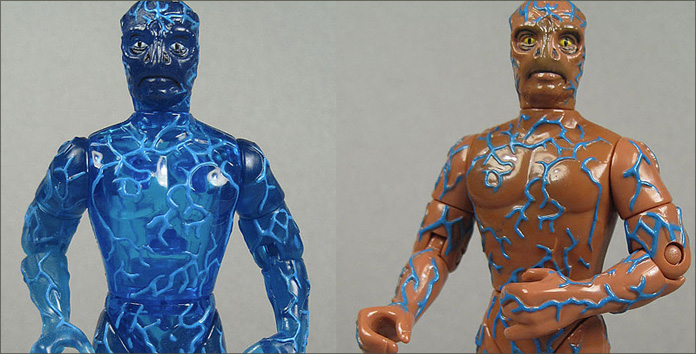
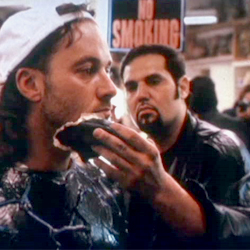
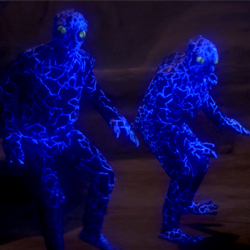

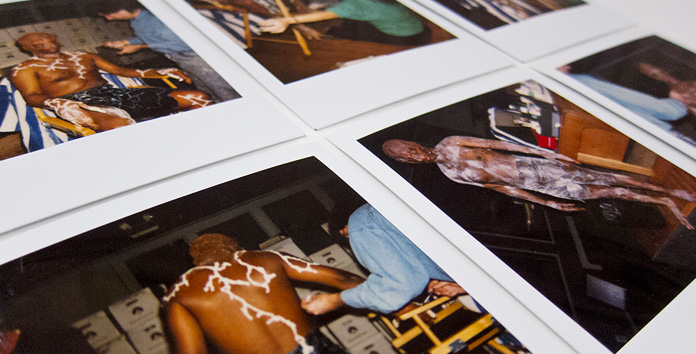
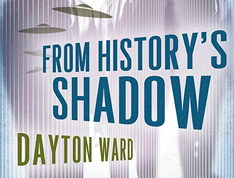
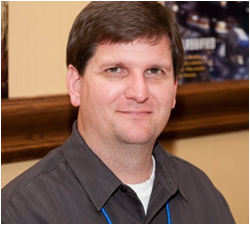 For 15 years, Dayton Ward has sparked our imaginations with some of the most memorable entries in the huge evolving world of Star Trek literature.
For 15 years, Dayton Ward has sparked our imaginations with some of the most memorable entries in the huge evolving world of Star Trek literature.